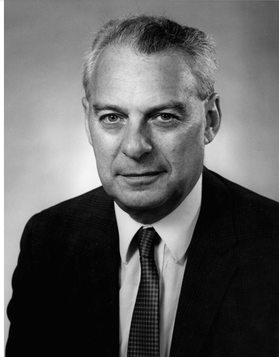Philip Saffman facts for kids
Quick facts for kids
Philip Saffman
|
|
|---|---|
 |
|
| Born |
Philip Geoffrey Saffman
19 March 1931 Leeds, England
|
| Died | 17 August 2008 (aged 77) Los Angeles
|
| Alma mater |
|
| Known for |
|
| Spouse(s) |
Ruth Arion
(m. 1954) |
| Awards |
|
| Scientific career | |
| Fields | |
| Institutions | |
| Doctoral advisor | George Batchelor |
| Doctoral students | Francis Bretherton |
Philip Geoffrey Saffman (born March 19, 1931 – died August 17, 2008) was a brilliant mathematician. He was a professor at the California Institute of Technology, often called Caltech. There, he taught Applied Mathematics and Aeronautics, which is the science of flight. Philip Saffman was known for his amazing work in understanding how liquids and gases move.
Contents
Early Life and Schooling
Philip Saffman was born in Leeds, England. He grew up in a Jewish family. He went to Roundhay Grammar School for his early education. He was very smart and started at Trinity College, Cambridge when he was only 15 years old.
He earned his first degree in 1953. Then, he continued his studies in advanced mathematics. In 1956, he received his PhD. His research was guided by a famous scientist named George Batchelor.
Career and Important Discoveries
Philip Saffman began his teaching career at the University of Cambridge. Later, he became a professor at King's College London. In 1964, he moved to the United States. He joined the faculty at Caltech. In 1995, he became the Theodore von Kármán Professor.
Many people saw Saffman as a top expert in fluid mechanics. This field studies how liquids and gases behave. He made a big impact on almost every part of this science.
Understanding Fluid Movement
Saffman is famous for the Saffman–Taylor instability. He worked on this with Geoffrey Ingram Taylor. It explains how fluids can form "fingers" when one pushes into another. This is important for things like getting more oil out of the ground.
He also helped create the Saffman–Delbrück model. This model explains how proteins move inside cell membranes. He worked on this with his colleague Max Delbrück.
Vortex Dynamics and Air Travel
Saffman made big contributions to understanding vorticity. This is about the swirling motion of fluids. It's important for how ships move through water and planes fly through the air.
His work on wake turbulence was very important. This is the swirling air left behind planes. His research led airlines to increase the time between planes taking off. This makes air travel safer for everyone.
He also studied how small particles move in fluids. Think about bubbles in a fizzy drink or blood cells. He showed that the special properties of fluids, not just how heavy the particles are, play a big role.
His Book: Vortex Dynamics
Besides his many research papers, Saffman wrote a book. It was called Vortex Dynamics. This book looked at the whole field of swirling fluids. He was a main contributor to this area. Another scientist, Russel E. Caflisch, said that anyone interested in fluid movement should read it.
Awards and Special Honors
Philip Saffman received many awards for his work. In 1986, he was chosen as a Fellow of the American Academy of Arts and Sciences. He also became a Fellow of the Royal Society. This is a very high honor for scientists in the United Kingdom.
He also received the American Physical Society's Otto Laporte Award. His nomination for the Royal Society praised his important work. It said his research was original and showed deep understanding. He helped explain many complex problems in fluid mechanics.
Personal Life
Philip Saffman married Ruth Arion in 1954. They had three children: Mark, Louise, and Emma. He also had eight grandchildren: Timothy, Gregory, Rae, Jenny, Nadine, Aaron, Miriam, Alexandra, and Andrey. He passed away in 2008.

